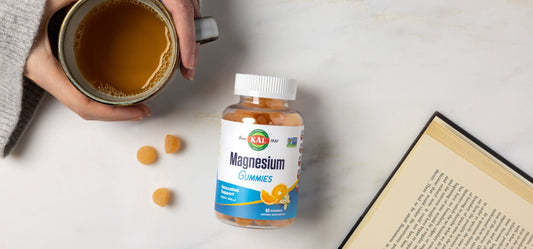Recovery is part of any active routine. But what about the days when you go beyond the usual grind?
We’re talking about half marathons, epic bike rides, day-long hikes—and are totally worth it. Regardless of our age, these adventures are part of living life to the fullest. While shorter workouts call for simple recovery, the big sessions demand more.
To help you bounce back strong, let’s dive into the science of recovery after these extended periods of exercise.
Why Is Recovery Important After a Workout?
Extended exercise puts a lot of stress on our bodies. Studies have found that an athlete’s immune system can remain suppressed for up to four weeks following marathons and other supramaximal efforts.1 That makes recovery more important than ever.
This phase is when muscle building and cortisol regulation take place. Without it, extended exercise may not deliver the benefits you’re looking for. Following these steps will help these big efforts not only be more enjoyable in the moment, but also more beneficial in both the short and long term.
1. Work Out with Recovery in Mind
To feel your best after a workout, it’s just as important to focus on what you do before and during exercise as what you do after.
Here’s how to enable strong recovery before you reach the finish line:
- Fuel the right way. Start about two hours before intense exercise. Consider carb-loading the day before with complex carbs like whole grain pasta. Skip protein and saturated fats close to exercise since they slow digestion and pull blood from your muscles.
- Refuel as you go. For workouts under an hour, you don’t need to eat—just hydrate. But for longer, high-intensity sessions, aim for 30–90 g of carbs per hour. For instance, 1 banana, ¼ cup raisins, and ¼ cup nuts offers about 30 g each. 2
- Take breaks as needed. Know your limits; push yourself, but enjoy the moment. You’ll spoil good memories if you pass out after the finish line.
Take these steps before you go, then focus on the rest to empower lasting energy even after your biggest days.
2. Hydrate, Hydrate, Hydrate
Recovery should always start here. Hydration plays a critical role in stabilizing body temperature during exercise, but its importance extends far beyond that—it supports the function of all our organs, including the kidneys, adrenals, and most importantly, the brain.
For active individuals, hydration is especially critical. Long periods of exercise lead to greater fluid loss, and intense training can cause shifts in adrenal tone that further increase your body’s fluid demands. Maintaining proper fluid balance is essential for both performance and recovery.
The amount of water you need during extended exercise depends on the weather:
- <85º F: 8 oz. of water every 30–60 minutes
- 85º F and/or 70% humidity: 12 oz. every 30–60 minutes 3
Want to punch up your hydration? Electrolytes are a powerful way to support physical activity and help your cells stay nourished. Add some electrolytes to your fuel with coconut water or KAL Hydro Magnesium drink mix. (Learn more about electrolytes with our Mineral Guide.)
3. Eat Well to Recover Well
You know you need healthy fuel before and during your workout. But after? That’s just as important—if not more so.
Immediately after prolonged activity, focus on a balanced, nutrient-rich diet to help repair tissue, reduce inflammation, and restore your energy reserves.
A strong recovery plate includes:
- Anti-inflammatory foods like salmon, herring, mackerel, avocados, olive oil, turmeric, chia seeds, flax seeds, almonds, walnuts, and berries
- High-quality proteins such as chicken, turkey, lean beef, pork, fish, tofu, tempeh, eggs, Greek yogurt, and seafood
- Fresh fruits and vegetables for vitamins, minerals, and antioxidants
- Complex carbohydrates like whole grain breads, pasta, and starchy vegetables to replenish glycogen stores 1
You can also support hydration and electrolytes through diet by eating fruits with high-water content, such as berries, melons, oranges or grapes.2
Eat well, and you’ll bounce back stronger.
4. Nourish Your Muscles
After a long day of movement, the couch might call your name—and rest is important. But staying sedentary for too long can actually slow your recovery. Intense exercise causes small amounts of tissue damage, which is a natural part of building strength and burning fat. To get the most from your workouts, your body needs time—and the right support—to repair.
In the days that follow, keep your body moving with lower-impact activities like light biking, elliptical sessions, walking, or water-based workouts. These gentle movements reduce stress on your joints, ease soreness, and help maintain healthy circulation, delivering oxygen and nutrients where they’re needed most.
Recovery is also the perfect time to listen to your body. If you experience pain, swelling, or instability in a joint that doesn’t improve, consider seeing a sports medicine specialist. Stretching and mobility work, including both dynamic and static techniques, can speed up recovery by promoting blood flow. Cold immersion may help, too, by stimulating circulation and encouraging a faster return to balance.3
5. Prioritize Sleep
The most powerful recovery tool we have? Sleep—hands down. It’s not just rest; it’s your body’s time to rebuild, recharge, and reset.
Deep sleep happens in two main stages: NREM and REM. During NREM, your body gets to work repairing muscle tissue and restoring energy stores. REM, on the other hand, helps your brain recover—supporting mental sharpness, motivation, and focus. When you miss out on that, even light movement can feel like a slog, and your drive to keep going takes a hit.3
Prioritizing quality sleep isn’t just good self-care—it’s a game-changer for how you recover and show up, day after day.
6. Smart Supplementation
Food should always be your foundation. But after extended exercise, your body may need more to fully refuel and recover at the cellular level.
Creatine is one of the most trusted recovery supplements out there (we’re fans of these gummies from Zhou Nutrition).* Another powerhouse? Magnesium. Athletes and active individuals often run low due to the daily demands on their bodies.3
Magnesium supports muscle and bone health while also promoting relaxation, which is key after a long day of training.* Try a Magnesium Glycinate supplement or our gentle Unflavored Magnesium Powder, an easy addition to any post-workout recovery drink.
Conclusion
For more tips on nutrition, mindful wellness practices, and how to fuel good feelings for the long run, follow us on Instagram at @kalvitamins!
*These statements have not been evaluated by the Food and Drug Administration. These products are not intended to diagnose, treat, cure or prevent any disease.
Resources:
- Willsher, Ronda. “Tips for marathon recovery — and starting a plan for the next one.” Mayo Clinic, https://sportsmedicine.mayoclinic.org/news/tips-for-marathon-recovery-and-starting-a-plan-for-the-next-one/.
- “Food as Fuel Before, During and After Workouts.” American Heart Association, https://www.heart.org/en/healthy-living/healthy-eating/eat-smart/nutrition-basics/food-as-fuel-before-during-and-after-workouts
- Brager, Allison. “Athlete Recovery Techniques to Achieve Peak Performance.” National Academy of Sports Medicine, https://blog.nasm.org/recovery-techniques-for-athletes.




